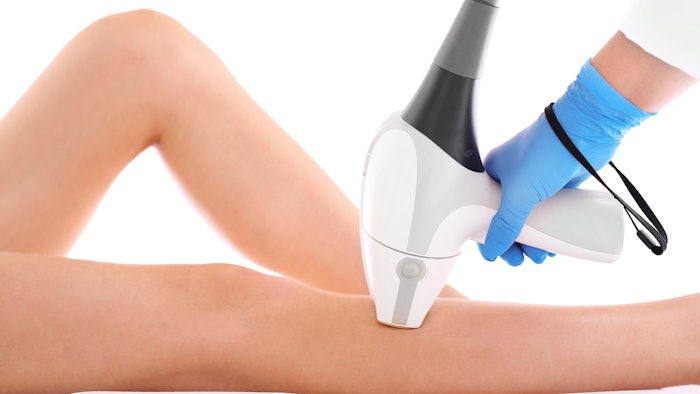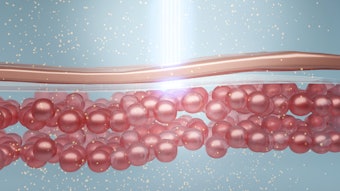
A team of investigators has been at work developing a patch that can be applied to skin during laser procedures to cool skin, track pulses and protect against laser plumes. Yakir S. Levin, MD, PhD, Rahib Islam, BASc, Mathew M. Avram, MD, JD, Walfre Franco, PhD, and R. Rox Anderson, MD, performed optimization and feasibility testing of a hydrogel patch for use in laser hair removal procedures. Their findings were published online in Lasers in Surgery and Medicine (December 2, 2021).
Related: Up in Smoke: Biological and Respiratory Dangers Lurking in Laser Plume
A two-layer patch composed of a cooling hydrogel layer (gelatin and glycerin) and an indicator layer was optimized and tested ex vivo. The concentration of gelatin and glycerin in the hydrogel layer was optimized based on two factors: the minimum gelatin concentration at which the gel can be handled without breakage and the minimum glycerin concentration that allows for storage at −20°C—the temperature of a conventional freezer—without crystallization.
Related: Risks of Laser Plumes
They found that a minimum gelatin concentration of 5% enabled easy handling of the hydrogel. A mixture composed of 60% water and 40% glycerin by volume consistently allowed storage at −20°C without crystallization.
The indicator layer was composed of a plastic transparency sheet with small dots of black ink particles printed at specified densities onto its surface. The team found that ink particle density of 50% and opacity of 5% provided a readily apparent indicator function following laser exposure.
Related: Laser Safety and Clinical Efficacy
Several adhesives, including a two-part epoxy, silicone rubber, and cyanoacrylate, were tested for their ability to adhere to the hydrogel and indicator layers. A cyanoacrylate glue was the only adhesive that proved adequate in adhering to the hydrogel and indicator layers.
The assembled patches—hydrogel layer, indicator layer and adhesive—were then tested ex vivo by measuring airborne particulate matter during simulated laser hair removal using a 755 nm alexandrite laser.
Transmission through the sheet during alexandrite laser exposures was 90%, and there was no difference in transmission percentage when comparing the sheet alone or with ink particles.
When hair clippings were exposed to laser treatment with and without the patch, the patch allowed an increase of 5,000 particles/cc relative to baseline particles in the environmental air vs. an increase of 150,000 particles/cc relative to baseline without the patch—a 97% decrease in particle debris in the plume when the patch was used.
Having established that the two-layer patch composed of hydrogel and plastic indicator layer with cyanoacrylate adhesive can be stored in a conventional freezer without crystallization prior to application, clearly indicates the pattern and sites of laser exposure and blocks almost all (97%) of particles in the laser-induced plume, the authors note that future work will include safety validation and in vivo efficacy testing of the patch.











